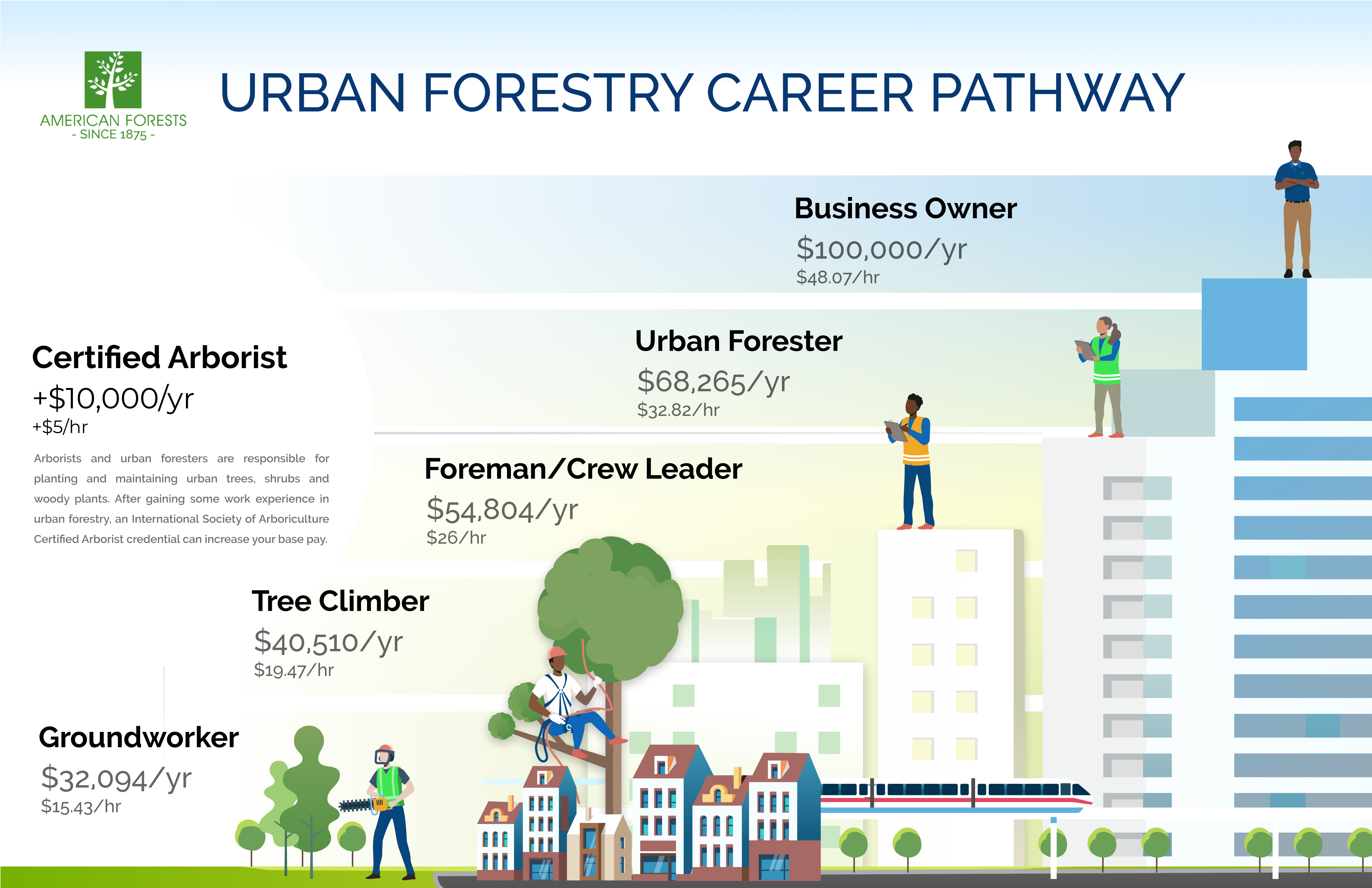Urban forestry offers many careers that allow you to help people and improve the environment where they live, work and play.
One of the most important decisions you can make in life is choosing your career. As a high school student, you may be wondering what careers the urban forestry field has to offer and what it takes to pursue those careers. You are already ahead of many of your peers because you have put thought into your career goals. And, you’ve reached the right place to explore the various opportunities available to you. The U.S. Bureau of Labor Statistics estimates that the need for urban foresters will grow by 5% over the next 10 years. Could you land a job in urban forestry? This guide will help you discover urban forestry careers that match your skills and interests. Let’s jump in!
Exploring your career options early on is a great investment in your future. Let’s face it, college is not for everyone; but it doesn’t mean you can’t have a career that you are proud of. There are many paths that you can take to have a successful career, and this guide can help you evaluate your options.
The phrase, “Right tree. Right place,” is used to select the appropriate tree species to plant in a specific location. Certain characteristics such as height, soil conditions, crown spread, etc., are taken into consideration. A similar phrase goes for people who are searching for jobs to embark on their career — “Right person. Right job,” and characteristics such as realistic, investigative, artistic, social, enterprising and conventional are considered.
What are your strengths? Have you identified your weaknesses? Do any of your strengths align with skills that pique your interest? Strengths are actions that are acquired over time and often have to do with your interests. So, how do you determine which career path is right for you? One way is to assess your personal strengths, weaknesses and interests using a career assessment test, such as a career aptitude test or career guidance test. While these tests can reveal which careers best suit your unique skillset, the results may not be what you were expecting. Tools like career assessment tests and the Career Pathways Exploration Guide are meant to provide you with information and resources that can help guide you in choosing the right urban forestry career.
Let’s get started by following these steps!
- Make a skills list as you reflect on your interests and talents.
- Explore your career personality type using Dr. John Holland’s Occupational Personality Types.
- Revisit your interests, skills and talents list to see if they align with your personality type.
- Explore pre-employment programs.
- Use the Holland’s Occupational Personality Types diagram to explore urban forestry-related job opportunities that will allow you to accomplish your goals, incorporate your interests and strengths, utilize your education and enhance your skills to build your career.
- Find out career requirements and check out career profiles based on Holland’s Occupational Personality Types in steps I-VI of this guide to learn more about urban forestry career pathways.
Remember, everyone’s career path is not the same. So, customize the path you need to navigate the career of your dreams. Don’t be afraid to find and seek help from a mentor. No matter which of the six career personality types you fall under, there is a career in urban forestry waiting for you! Make your move and explore the various urban forestry careers.
Found an occupation you are interested in? Explore job opportunities that are currently available in urban forestry.


